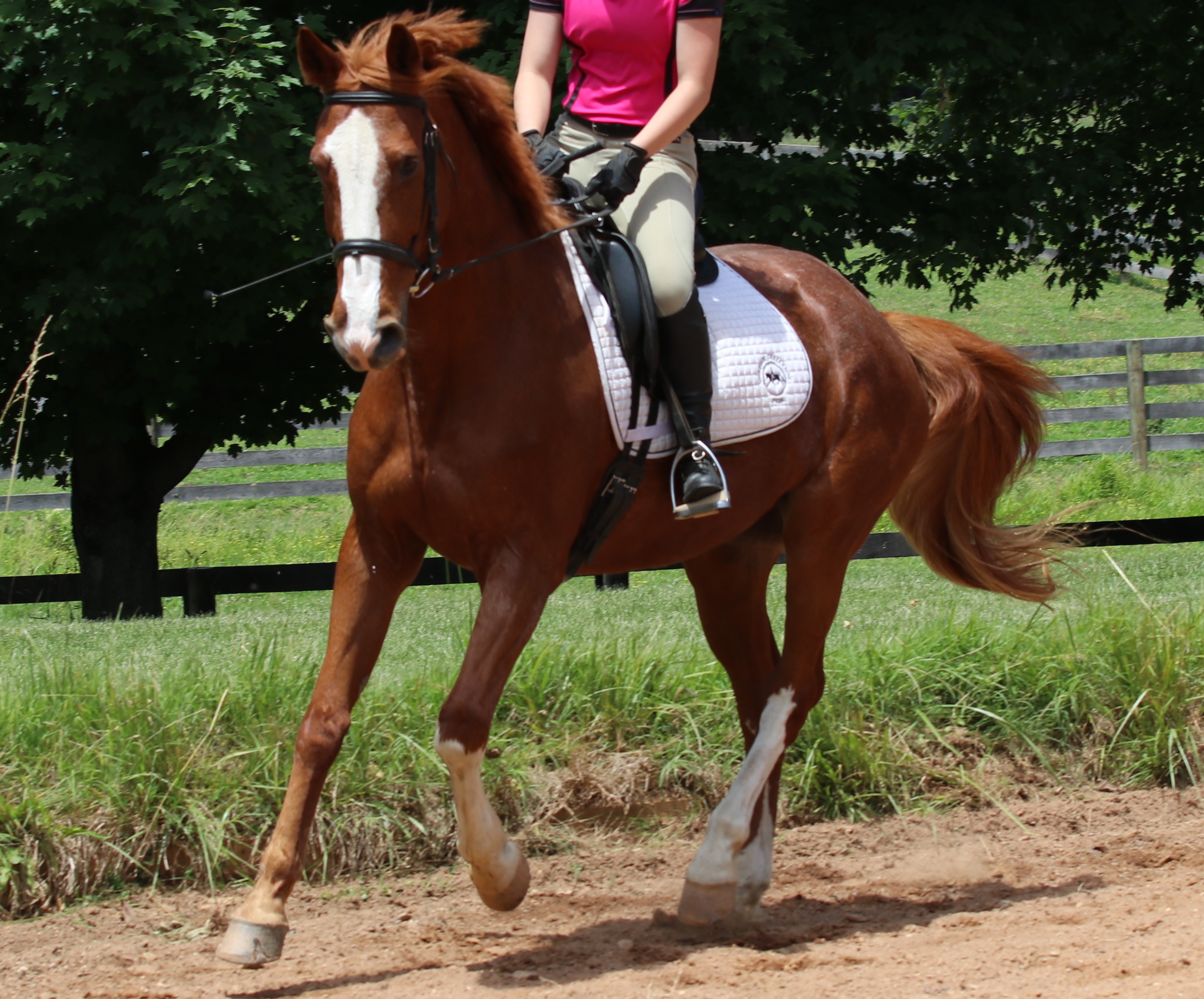Q: I sometimes get the wrong lead when cantering. How can I get it right more consistently? Should I transition into walk or trot immediately when getting the wrong lead? I don’t want to discourage my horse. — Name withheld by request
A: There are many factors that could be causing the problem in your canter transitions. First, check the reactivity of your horse and the timing of your aid. It can be a problem if your aid for the canter transition is more than just a light touch. If your horse’s reaction is longer than a split second, it can be a big problem. Also, if your aid is used at the wrong time within the walk or trot, you may actually be signaling the wrong lead and not even realize it.

Make sure you have done your homework on getting your horse to be responsive to a light aid in his general work. An aid to canter should be easy and soft. It should ask nicely, evoking a respectful answer from your horse without any delay or discussion. An aid that is stronger than a light, soft leg should not be considered an aid but rather a correction or punishment. Be sure not to use a correction as an aid to make the canter happen. Work on reactivity until your aid to canter is very light and your horse is sensitive to it. Once that is confirmed, focus on the timing of your canter aid.
The timing of your aid to canter is almost more important than the placement of it. You should have your outside leg farther back than your inside leg, but lightly use both in the cue; resist using the strong hamstring muscles. Your body weight should not be used to signal the canter. However, your inside seat bone may advance forward in the saddle to match the movement as your horse takes the first canter step. Your shoulders should remain neutral, perpendicular to your horse’s spine. You should try to keep your center of gravity and balance stable and in the middle of your horse’s back during the transition as you would at any other moment. Keep the aid to canter as simple as possible.
Many riders who miss the correct lead in canter transitions make the mistake of focusing more on the position of the aid than on the timing of it. When you are ready to ask for the canter, you must pick the right moment because the horse, who is now ready to respond immediately, will take the lead according to where his legs are when you ask. For instance, to go from walk to right-lead canter, time your leg aid so that you signal your horse the moment that he lifts his right front leg. (This is also when his left hind leg is about to leave the ground, and that’s the first step of the right-lead canter.) If your horse holds up his end of the deal and is obedient in his quick response time, he will go into the correct lead as a natural sequence from when you asked in the walk. The same is true of trot-to-canter transitions.
If you still get the wrong lead, consider whether your horse has any soundness issues. Be sure to have him examined by a qualified veterinarian to assure that he is in good health and that your tack is fitting correctly as well.
Lastly, your problem could be caused by asymmetry in your body. All riders have at least some degree of asymmetry causing undesirable effects in the horse. Common asymmetries in riders include collapsing the rib cage on one side or the other, having one leg that drops looser and longer than the other, having seat bones that aren’t equally placed in their distance from the horse’s spine and twisting the torso to one side or the other. There are endless ways that riders become crooked or uneven, and it takes a biomechanics expert to really get to the bottom of it in each individual. This alone can be a long-term study and ongoing goal. Often, biomechanics experts are not going to be your top competitive riders but, there are those who devote their career to this alone. You can also gain insight into your asymmetries in unmounted work like Pilates, yoga and the Alexander Technique.
This article first appeared in the February 2012 issue of Dressage Today magazine.
Heather Blitz won team gold and individual silver medals at the 2011 Pan American Games and was part of the U.S. Olympic team for the 2012 London Olympic Games.











